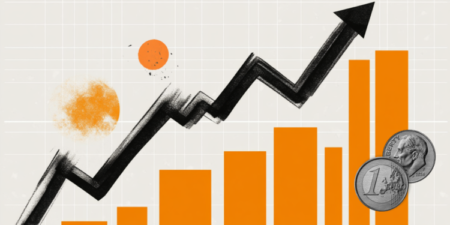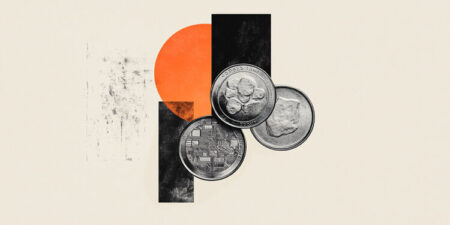- Gold price reverses the Asian session dip amid emergence of mild US Dollar selling on Monday.
- Bets that the Fed will pause its rate-cutting cycle might cap the XAU/USD amid a positive risk tone.
- Traders now keenly await US President-elect Donald Trump’s inaugural address for a fresh impetus.
Gold price (XAU/USD) attracts some dip-buyers near the $2,689 region during the Asian session on Monday and for now, seems to have stalled its retracement slide from over a one-month top touched last week. The US Dollar (USD) kicks off the new week on a softer note and erodes a part of Friday’s positive move amid bets that the Federal Reserve (Fed) will cut interest rates twice this year amid signs of abating inflation in the US. This, along with uncertainty over US President-elect Donald Trump’s tariff plans, lifts the safe-haven precious metal back above the $2,700 mark in the last hour.
Meanwhile, expectations that Trump’s protectionist policies could boost inflation and force the Fed to stick to its hawkish stance might hold back the USD bears from placing aggressive bearish bets. This, along with easing tensions in the Middle East and hopes that Trump could relax curbs on Russia in exchange for a deal to end the Ukraine war, might contribute to capping the upside for the non-yielding Gold price. Traders might also opt to wait for Trump’s inaugural speech before positioning for a firm intraday direction amid a US holiday in observance of Martin Luther King Jr. Day.
Gold price draws support from modest USD downtick, bets for further Fed rate cuts in 2025
- Gold price registered gains for the third consecutive week amid bets that the Federal Reserve may not exclude the possibility of cutting interest rates further in 2025 and benefits the Gold price.
- The expectations were lifted by the US Producer Price Index (PPI) and Consumer Price Index (CPI) released last week, which indicated that inflationary pressures in the US eased in December.
- Adding to this, Fed Governor Christopher Waller said last Thursday that inflation is likely to continue to ease and allow the US central bank to cut interest rates sooner and faster than expected.
- The US Dollar struggles to capitalize on Friday’s positive move, which, along with concerns about US President-elect Donald Trump’s disruptive trade tariffs, underpins the safe-haven XAU/USD.
- Against the backdrop of the Israel-Hamas ceasefire deal, hopes that Trump might relax curbs on Russia in exchange for a deal to end the Ukraine war remain supportive of the positive risk tone.
- Furthermore, the US central bank is expected to pause its rate-cutting cycle later this month amid expectations that Trump’s policies could stoke inflation, capping the non-yielding yellow metal.
- Traders might also refrain from placing aggressive directional bets ahead of Trump’s inaugural address later this Monday and a US holiday in observance of Martin Luther King Jr. Day.
Gold price could accelerate the positive move once the $2,724-2,725 barrier is cleared decisively
From a technical perspective, any subsequent move up is likely to face some resistance near the $2,715 area ahead of the $2,724-2,725 region, or a one-month top touched last Thursday. Given that oscillators on the daily chart have been gaining positive traction, some follow-through buying should pave the way for a move towards the $2,745 intermediate hurdle en route to the $2,760-2,762 area. The XAU/USD might eventually aim towards challenging the all-time peak, around the $2,790 region touched in October 2024.
On the flip side, any meaningful slide below the $2,700-2,690 immediate support could be seen as a buying opportunity and remain limited near the $2,662-2,662 region. The latter should act as a pivotal point, below which the Gold price could fall to the $2,635 zone en route to the $2,620-2,615 confluence – comprising a short-term ascending trend-line extending from the November swing low and the 100-day Exponential Moving Average (EMA).
Gold FAQs
Gold has played a key role in human’s history as it has been widely used as a store of value and medium of exchange. Currently, apart from its shine and usage for jewelry, the precious metal is widely seen as a safe-haven asset, meaning that it is considered a good investment during turbulent times. Gold is also widely seen as a hedge against inflation and against depreciating currencies as it doesn’t rely on any specific issuer or government.
Central banks are the biggest Gold holders. In their aim to support their currencies in turbulent times, central banks tend to diversify their reserves and buy Gold to improve the perceived strength of the economy and the currency. High Gold reserves can be a source of trust for a country’s solvency. Central banks added 1,136 tonnes of Gold worth around $70 billion to their reserves in 2022, according to data from the World Gold Council. This is the highest yearly purchase since records began. Central banks from emerging economies such as China, India and Turkey are quickly increasing their Gold reserves.
Gold has an inverse correlation with the US Dollar and US Treasuries, which are both major reserve and safe-haven assets. When the Dollar depreciates, Gold tends to rise, enabling investors and central banks to diversify their assets in turbulent times. Gold is also inversely correlated with risk assets. A rally in the stock market tends to weaken Gold price, while sell-offs in riskier markets tend to favor the precious metal.
The price can move due to a wide range of factors. Geopolitical instability or fears of a deep recession can quickly make Gold price escalate due to its safe-haven status. As a yield-less asset, Gold tends to rise with lower interest rates, while higher cost of money usually weighs down on the yellow metal. Still, most moves depend on how the US Dollar (USD) behaves as the asset is priced in dollars (XAU/USD). A strong Dollar tends to keep the price of Gold controlled, whereas a weaker Dollar is likely to push Gold prices up.
Read the full article here
















